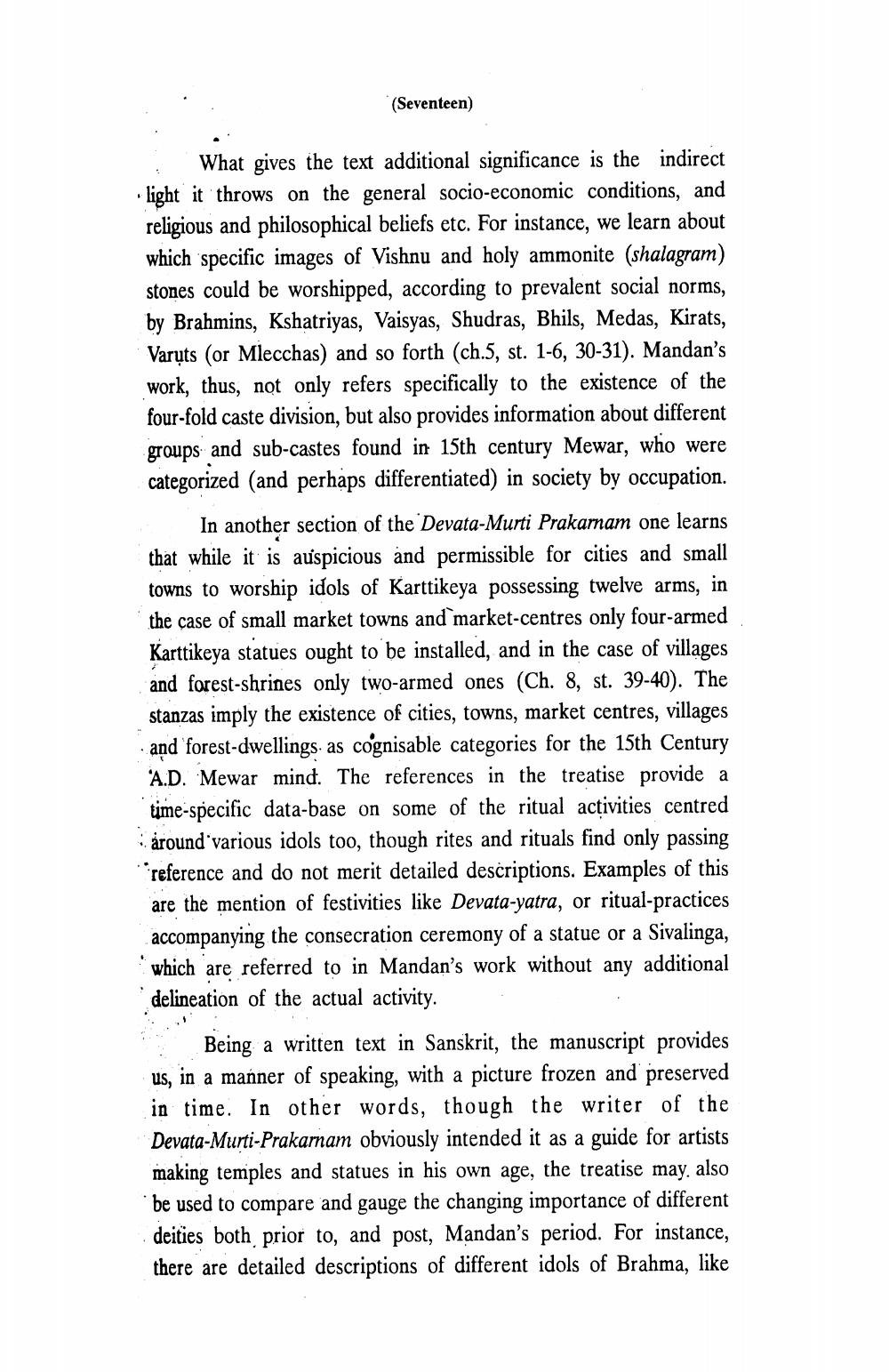________________
(Seventeen)
What gives the text additional significance is the indirect · light it throws on the general socio-economic conditions, and
religious and philosophical beliefs etc. For instance, we learn about which specific images of Vishnu and holy ammonite (shalagram) stones could be worshipped, according to prevalent social norms, by Brahmins, Kshatriyas, Vaisyas, Shudras, Bhils, Medas, Kirats, Varụts (or Mlecchas) and so forth (ch.5, st. 1-6, 30-31). Mandan's work, thus, not only refers specifically to the existence of the four-fold caste division, but also provides information about different groups and sub-castes found in 15th century Mewar, who were categorized (and perhaps differentiated) in society by occupation.
In another section of the Devata-Murti Prakarnam one learns that while it is auspicious and permissible for cities and small towns to worship idols of Karttikeya possessing twelve arms, in the case of small market towns and market-centres only four-armed Karttikeya statues ought to be installed, and in the case of villages and forest-shrines only two-armed ones (Ch. 8, st. 39-40). The stanzas imply the existence of cities, towns, market centres, villages and 'forest-dwellings as cognisable categories for the 15th Century A.D. Mewar mind. The references in the treatise provide a time-specific data-base on some of the ritual activities centred around various idols too, though rites and rituals find only passing reference and do not merit detailed descriptions. Examples of this are the mention of festivities like Devata-yatra, or ritual-practices accompanying the consecration ceremony of a statue or a Sivalinga, which are referred to in Mandan's work without any additional delineation of the actual activity.
Being a written text in Sanskrit, the manuscript provides us, in a manner of speaking, with a picture frozen and preserved in time. In other words, though the writer of the Devata-Murti-Prakarnam obviously intended it as a guide for artists making temples and statues in his own age, the treatise may also be used to compare and gauge the changing importance of different deities both prior to, and post, Mandan's period. For instance, there are detailed descriptions of different idols of Brahma, like




